Our next stop on our drive to Patna was Rajgir. It is about 85 km north of Bodh Gaya and about 95 km south of Patna.
- Vishwa Shanti Stupa
- Nalanda
Vishwa Shanti Stupa (World Peace Stupa) – Constructed by the Japanese atop the Ratnagiri hill at an elevation of 400 m above sea level, Vishwa Shanti Stupa is a popular attraction of Rajgir. To reach the top of this hill one has to take a ropeway. This place is also called Gridhakuta.
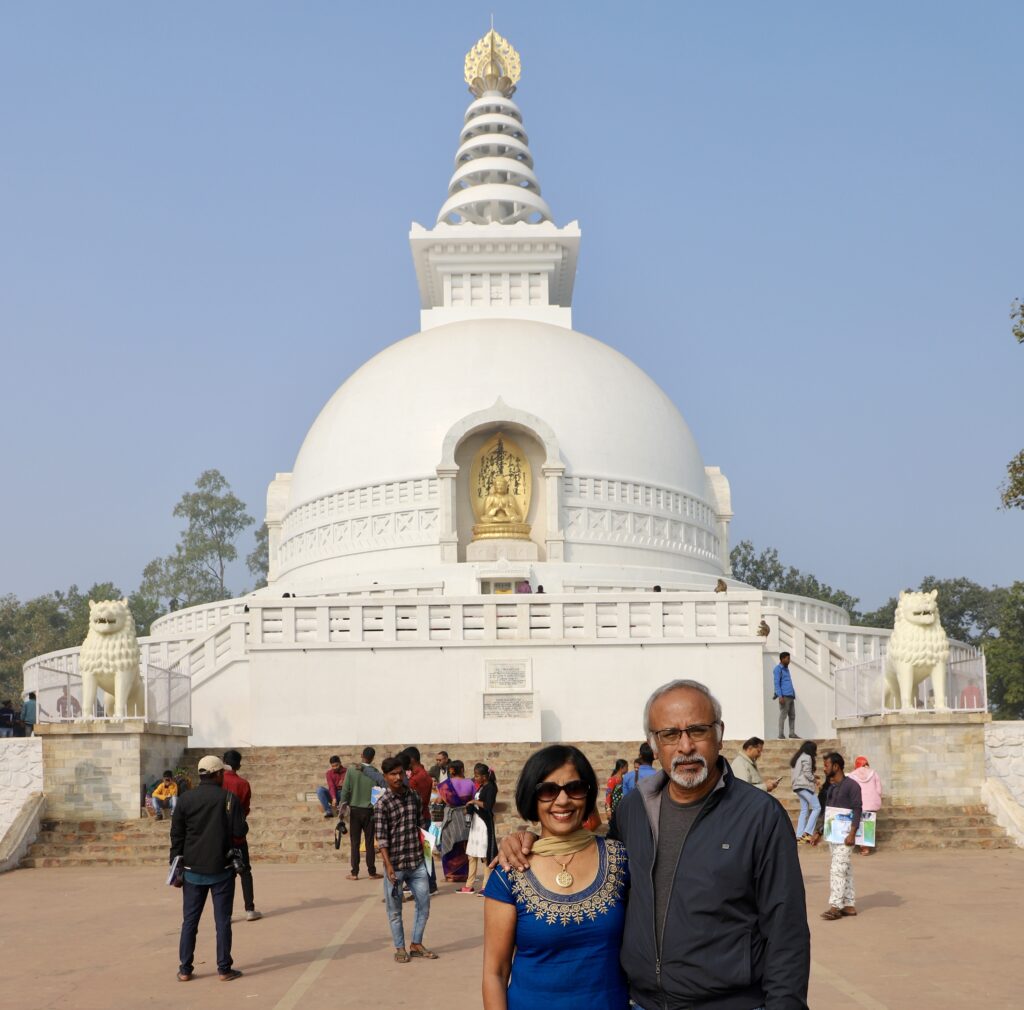
The Stupa is built in marble and on the four corners of the Stupa are 4 glimmering statues of Buddha with each representing his life periods of birth, enlightenment, preaching and death.
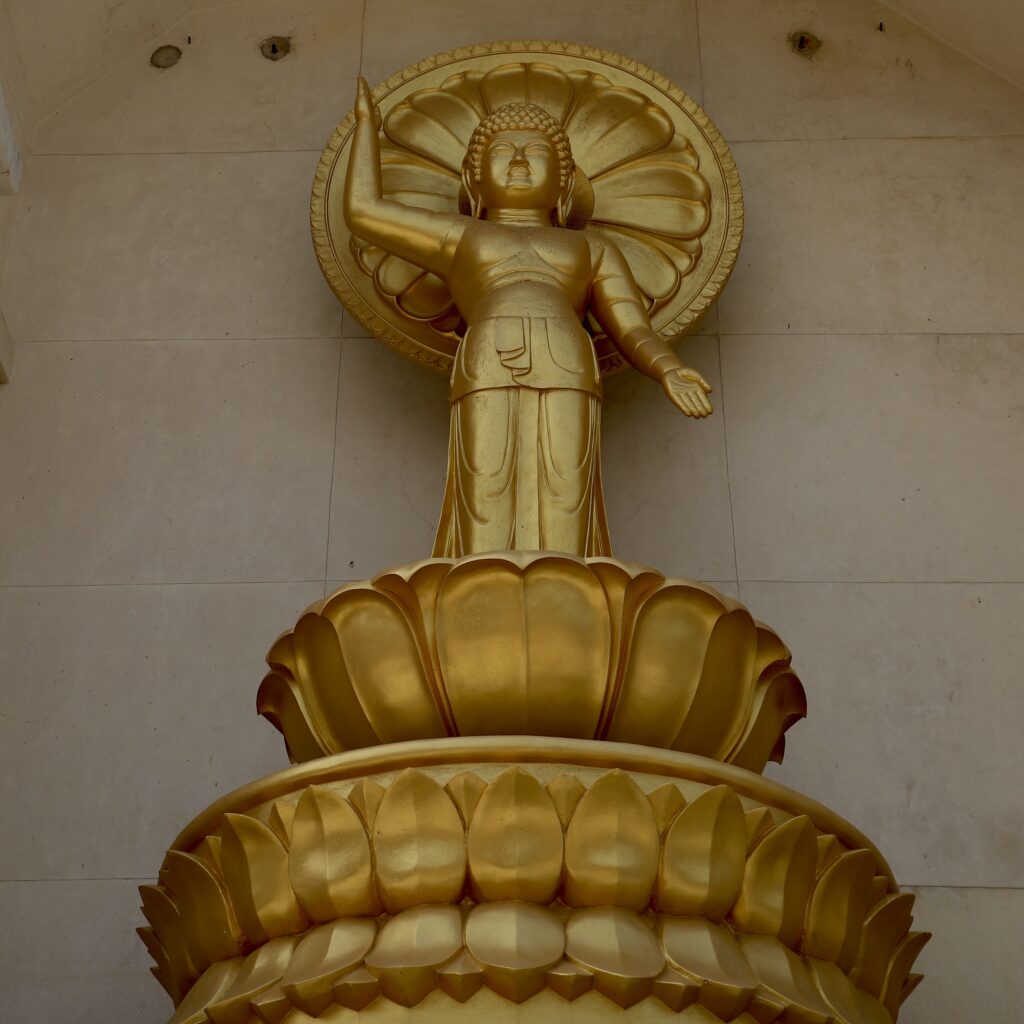
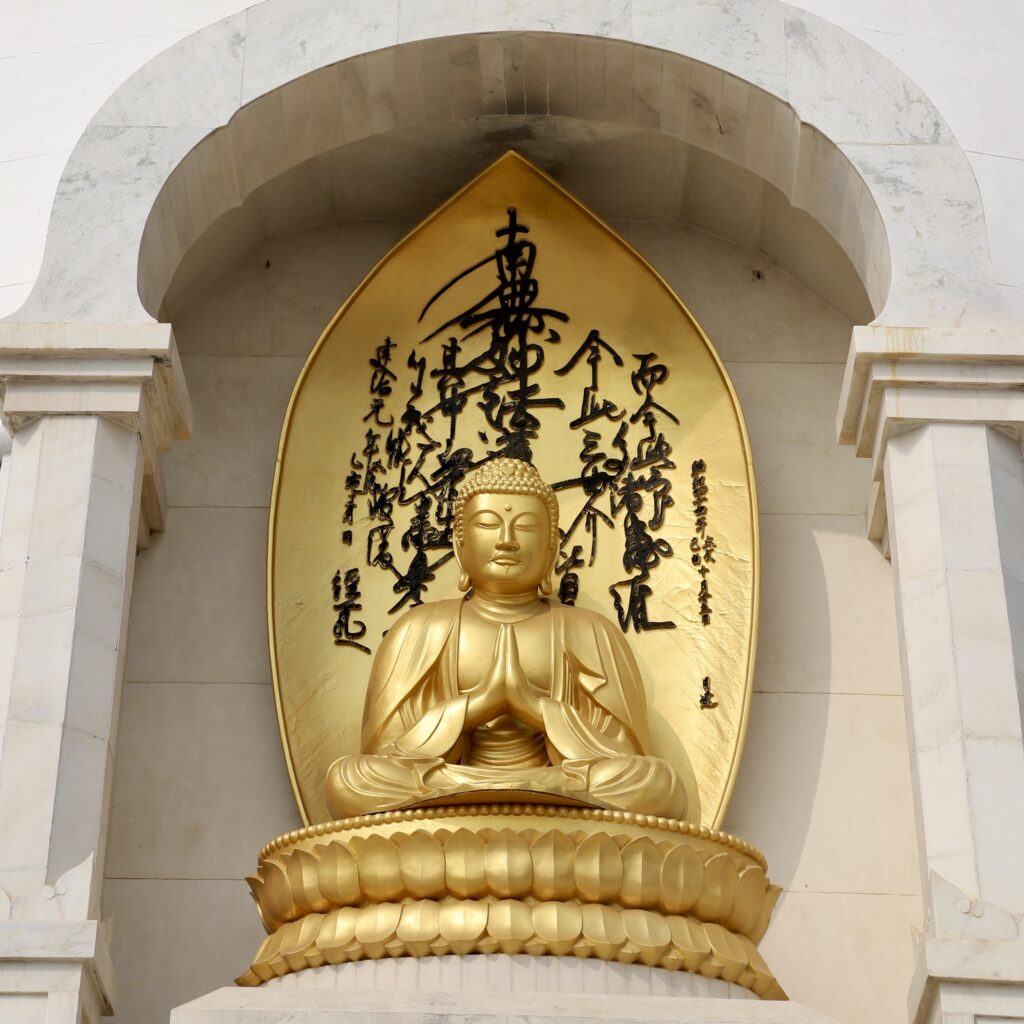
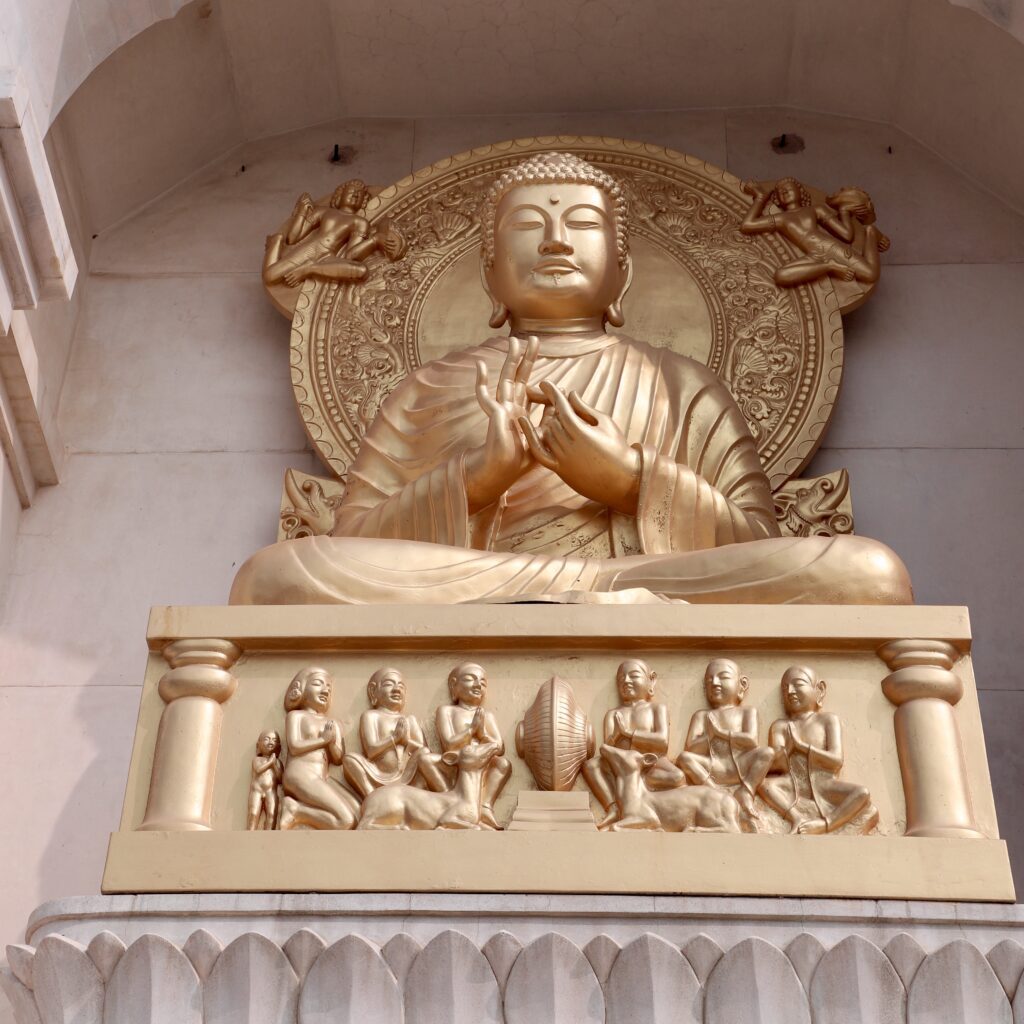
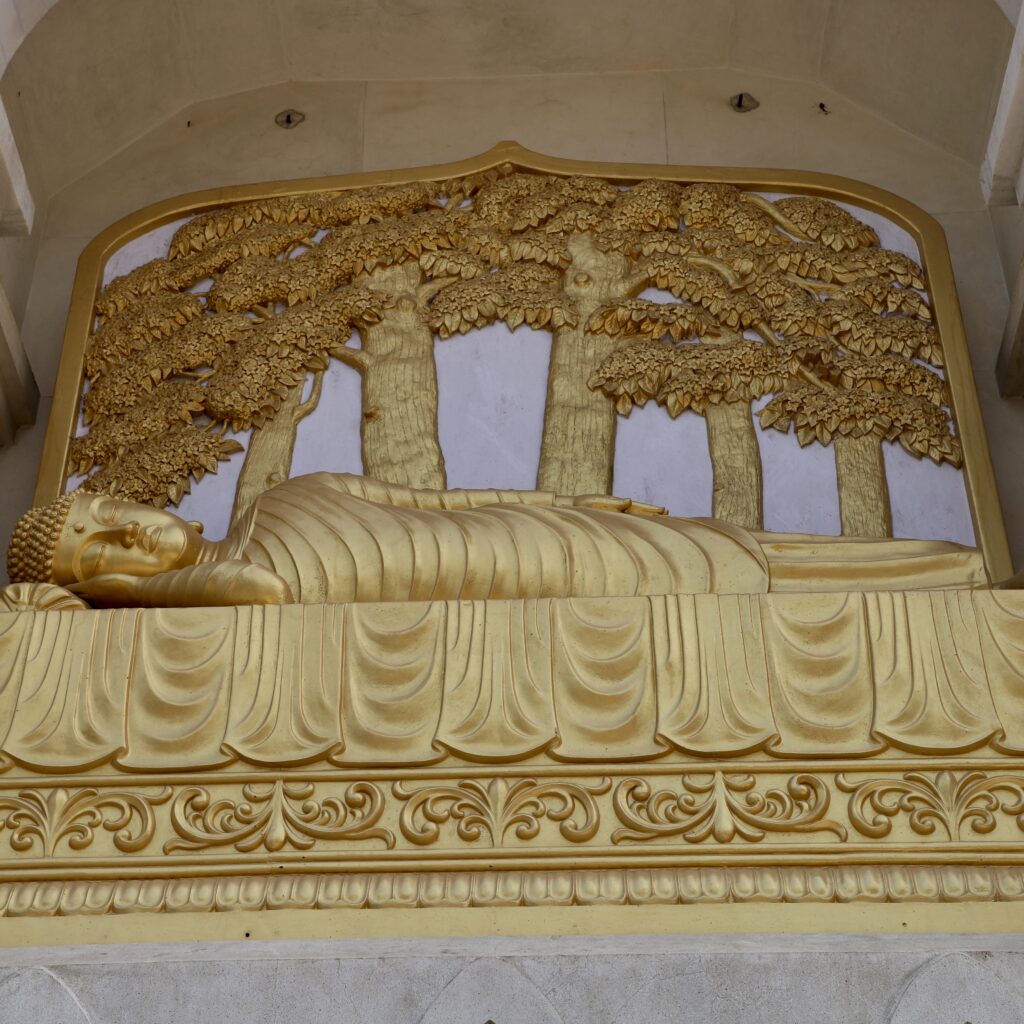
Ruins of Nalanda – Nalanda was a renowned Buddhist monastery and one of the greatest centers of learning in the ancient world and was the world’s first residential university located near the city of Rajagriha (now Rajgir). Operating for almost a thousand years from 427 CE until around 1400 CE, Nalanda played a vital role in promoting the patronage of arts and academics during the 5th and 6th century CE, a period that has since been described as the Golden Age of India by scholars. Today, the scholastic and monastic institution tells its stories through its ruins of stupas, shrines and viharas. A UNESCO World Heritage Site, the attraction also features a fascinating archeological museum next to the ruins.
Nalanda ruins are open 9am-5pm daily except Friday. Here are some of the points of interest at the site.
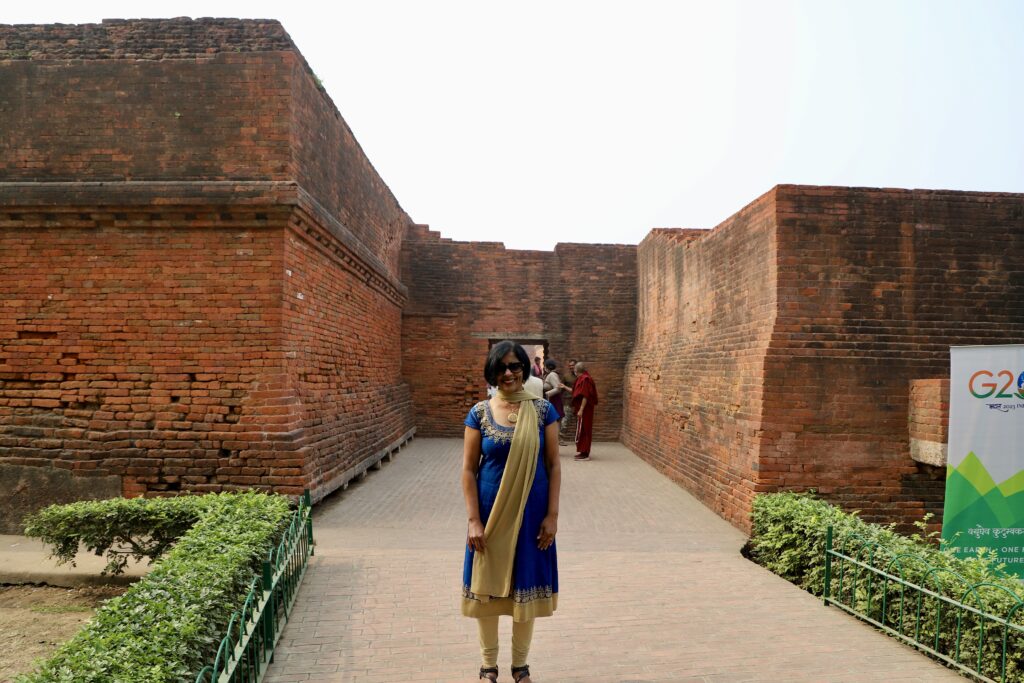
Excavations at the ruins have revealed the following :
- 11 monasteries and 6 major brick temples arranged in a planned layout.
- The structures are arranged in a planned layout along a central path running north to south
- Excavations were conducted by the Archaeological Survey of India in several periods, including 1915-1937 and 1974-1982
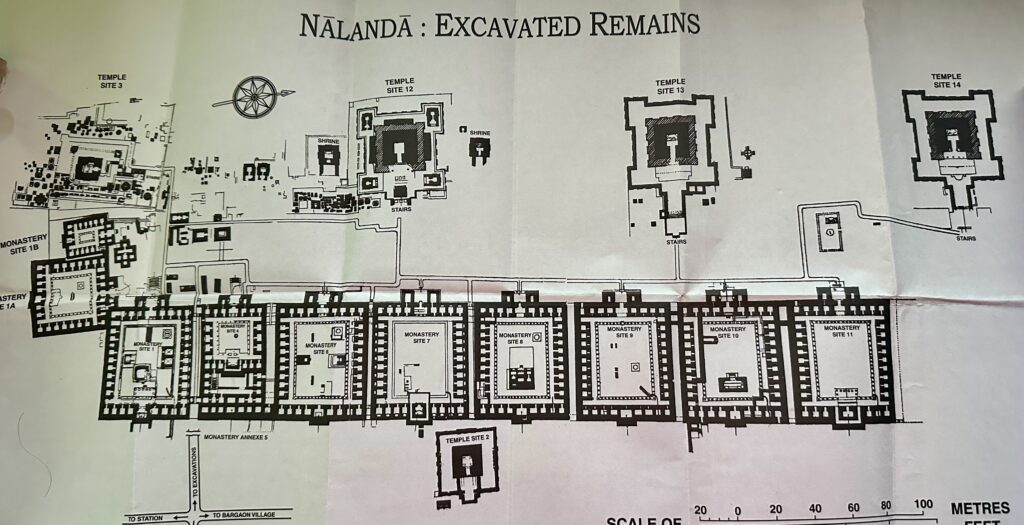
Ruins of Nalanda, Monastery Site 1 – The monastery consists of a number of monk cells arranged in a row along a corridor. A wall separates the monk cells from the courtyard which has a raised platform that might have been used by the teacher to address students seated in the courtyard.

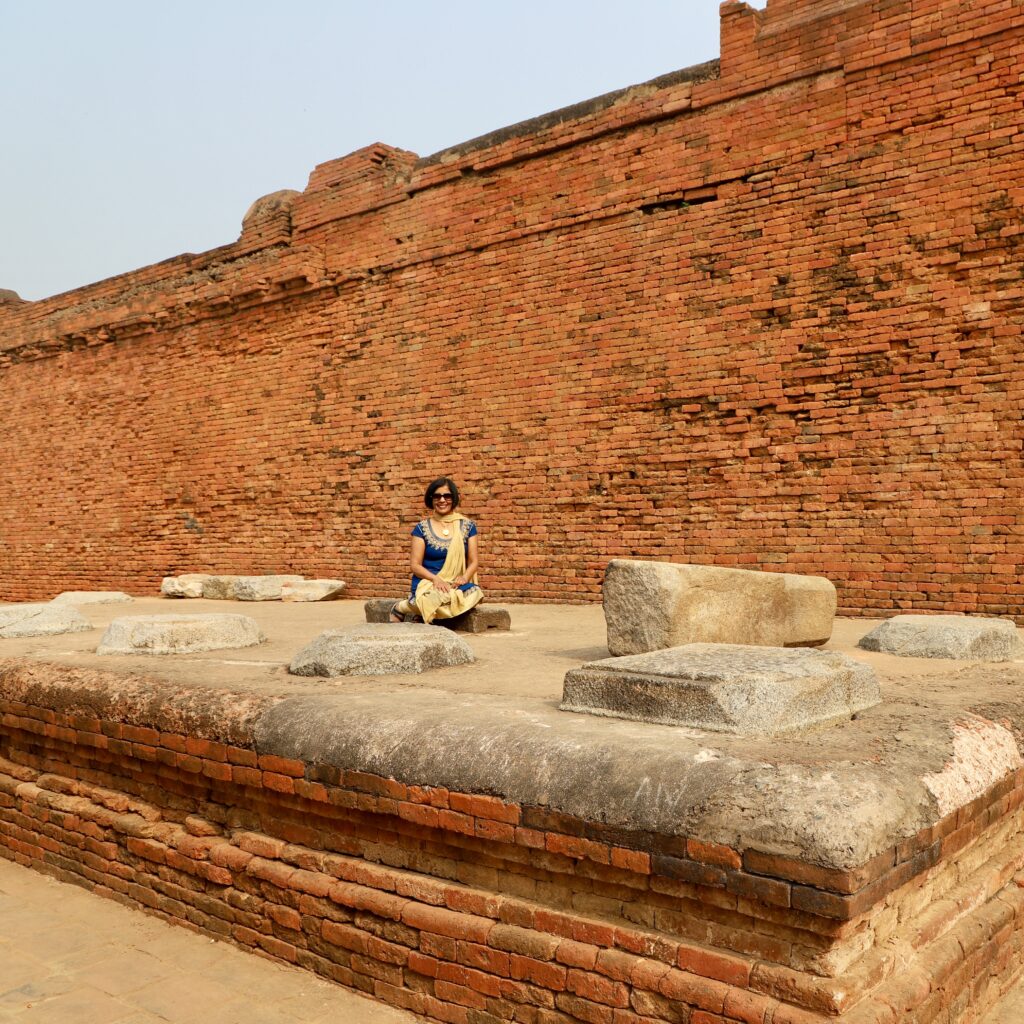
Ruins of Nalanda, Main Temple 3 – Also known as the Sariputra Stupa, this is the most iconic of the surviving monuments at the Nalanda World Heritage Site. Built in the 3rd Century by Mauryan emperor Ashoka in the honour of Buddha’s follower Sariputra, the Stupa is shaped like a pyramid at the top.
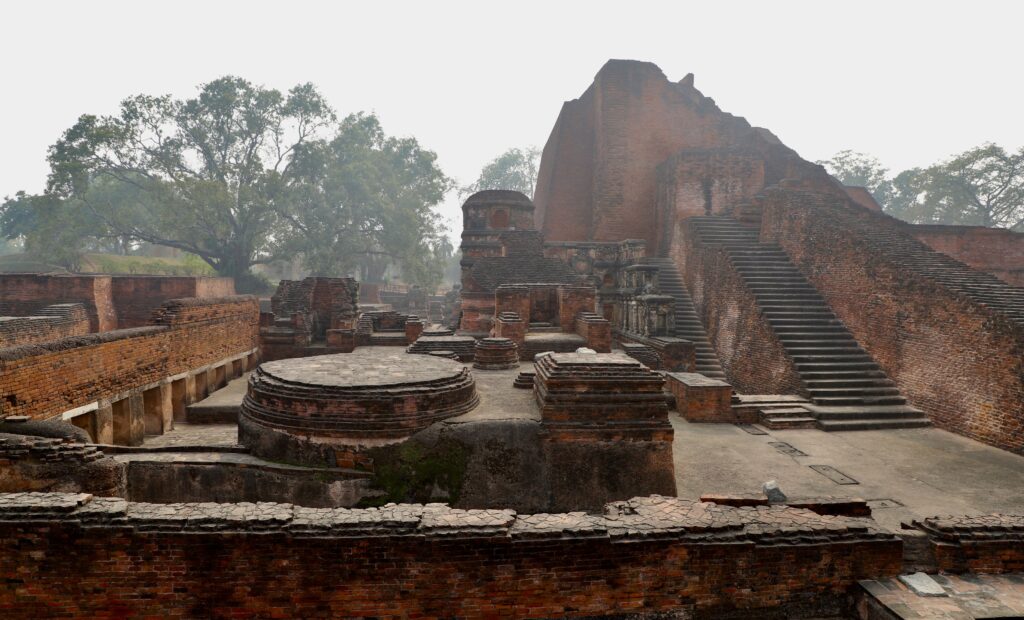
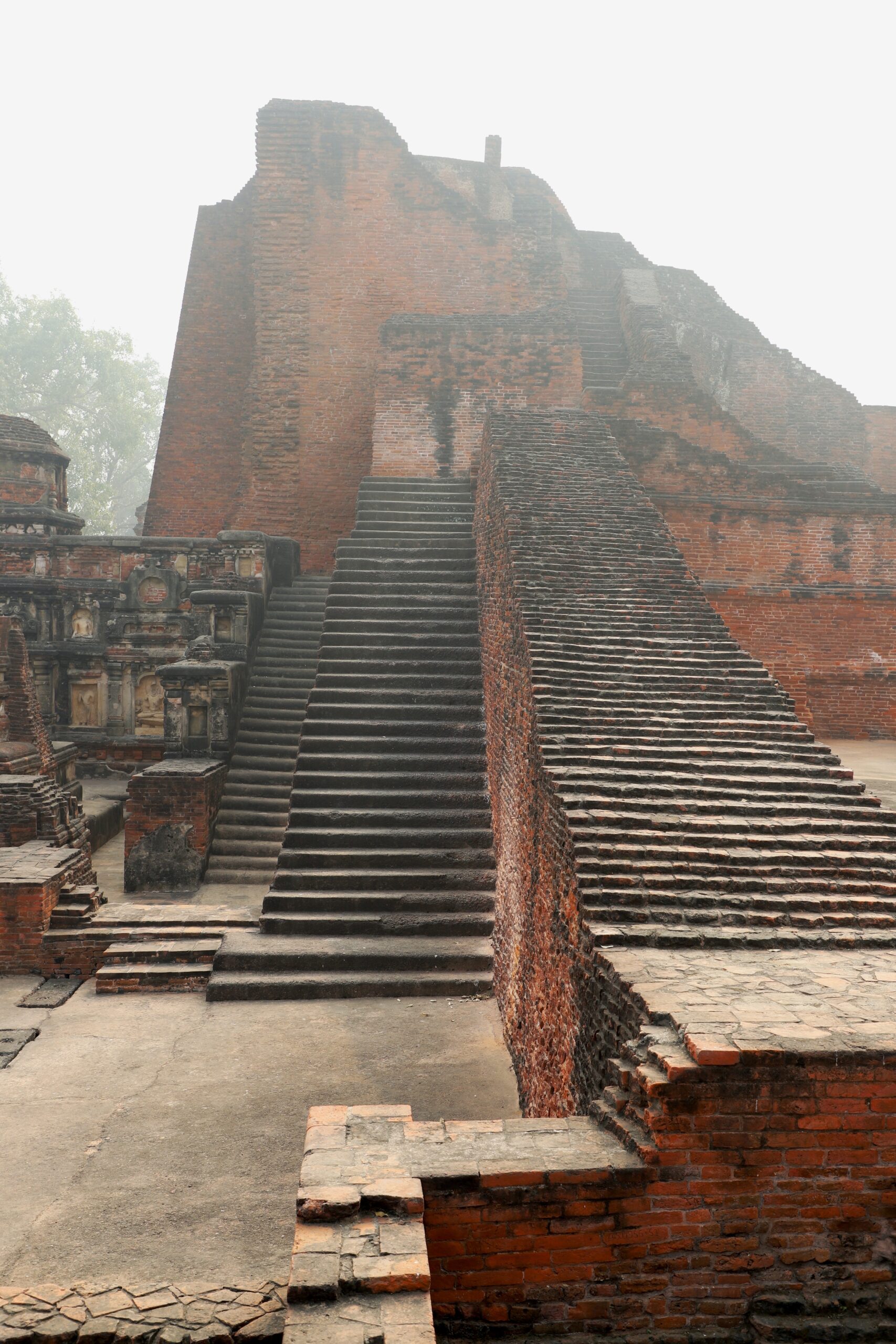
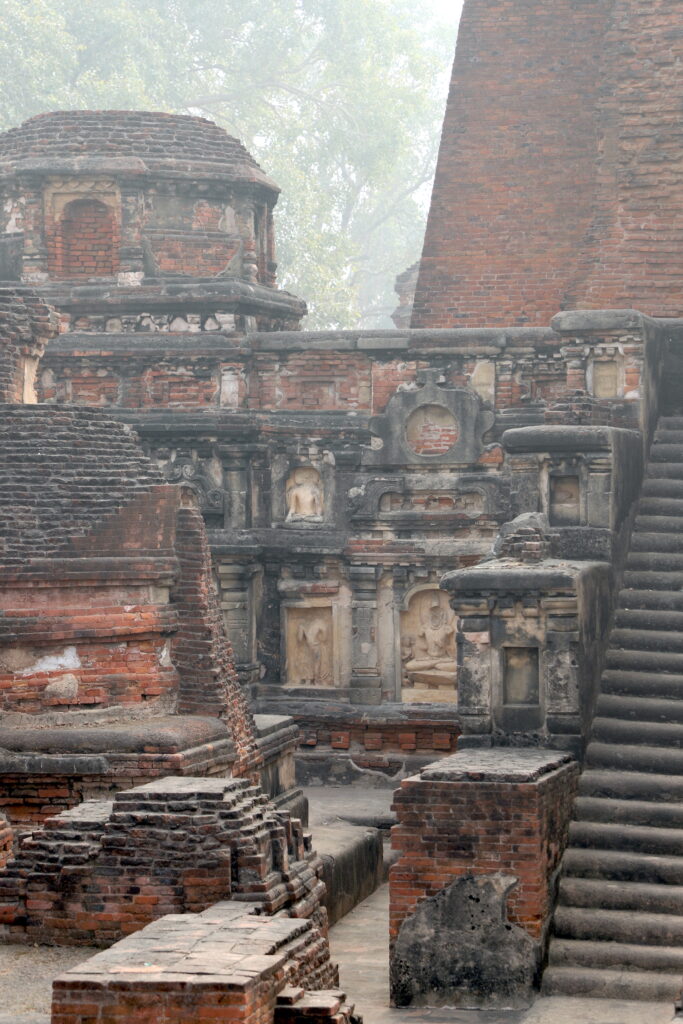
Ruins of Nalanda, Temple Site 12 – This is a brick temple with a Buddhist affiliation and constructed on a raised platform. It features a sanctum (inner chamber) at the center and includes a porch and a circumambulatory path (path for walking around). The exterior walls have niches, pilasters, and decorative brick moldings, which are more prominent in the early phase, while later phases are almost plain.

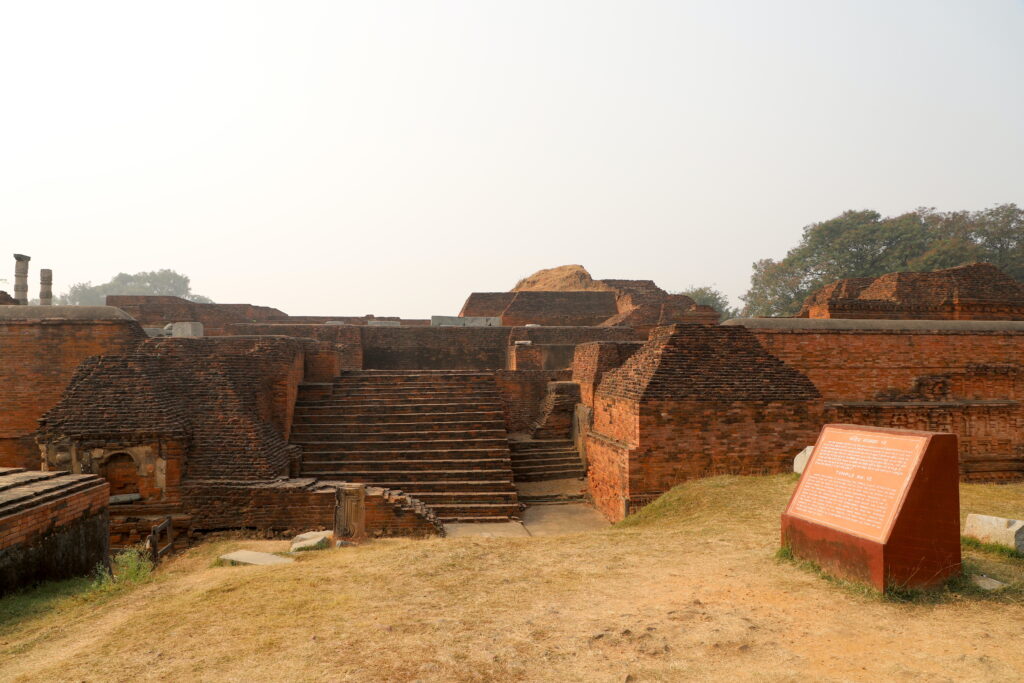
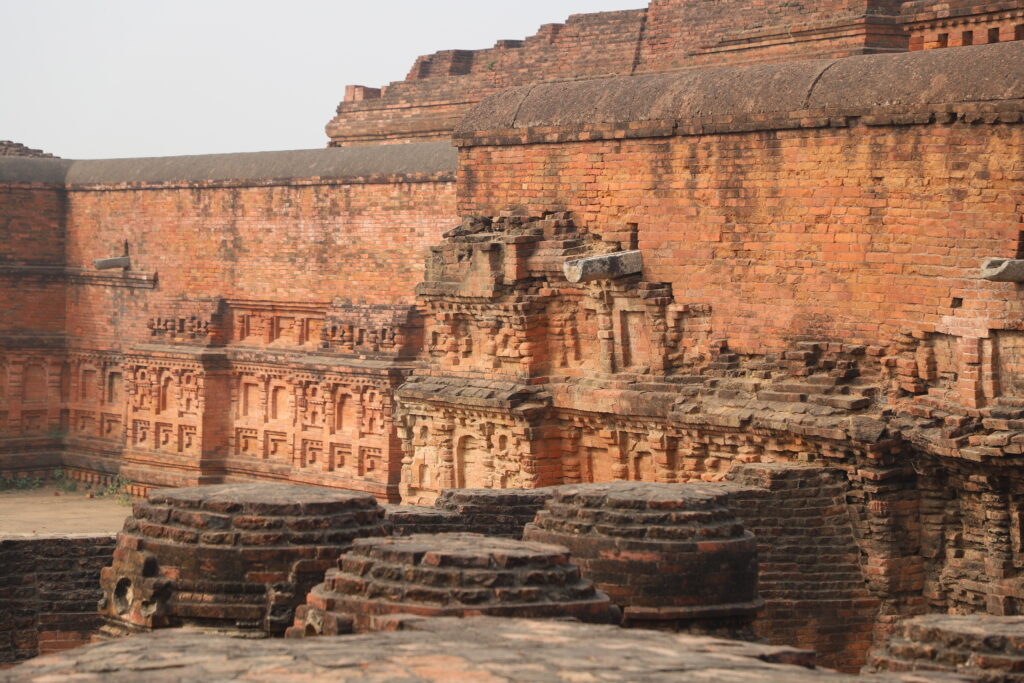
Ruins of Nalanda, Temple Site 13 – This temple also faces east like Temple 12 and was constructed on a raised platform. It features a sanctum at the center, a porch in the front, and a circumambulatory path all around. A flight of steps takes you to the temple entrance. A huge statue of Buddha was installed in the sanctum, remnants of which can be seen on its high masonry pedestal.
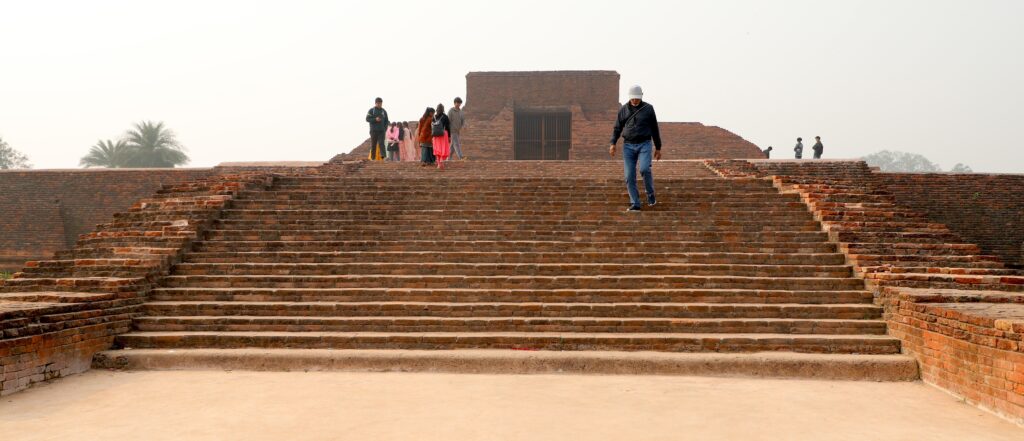
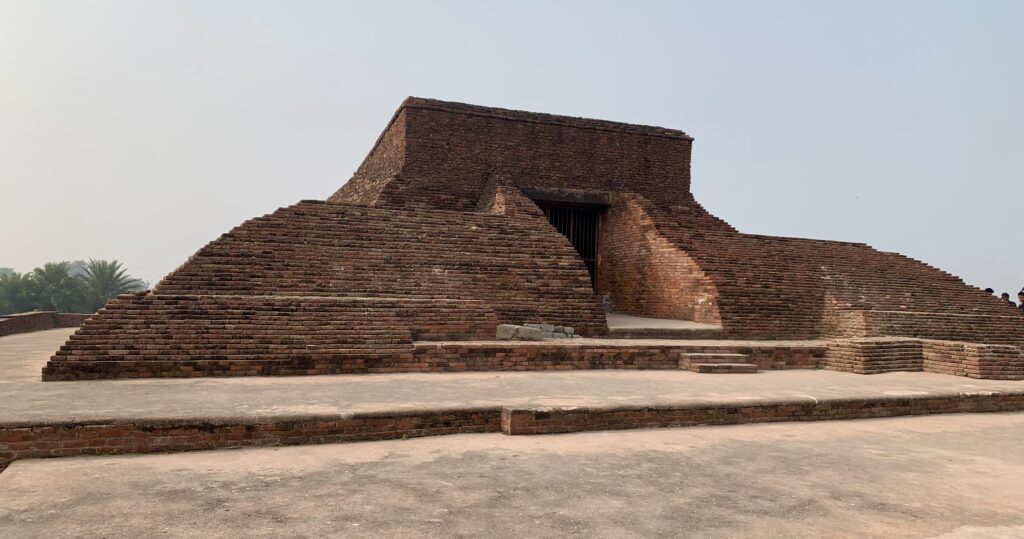
Ruins of Nalanda, Monasteries – All the monasteries were similar in size and plan with the usual features like an entrance from the west, central court, pillared verandah, shrine chamber, rooms for monks with provisions for skylights and staircases.
In Monastery 9, you can also see a well, six ovens, and a drain for disposal of water. Fragments of stone pillars from the verandahs are still visible in their original positions
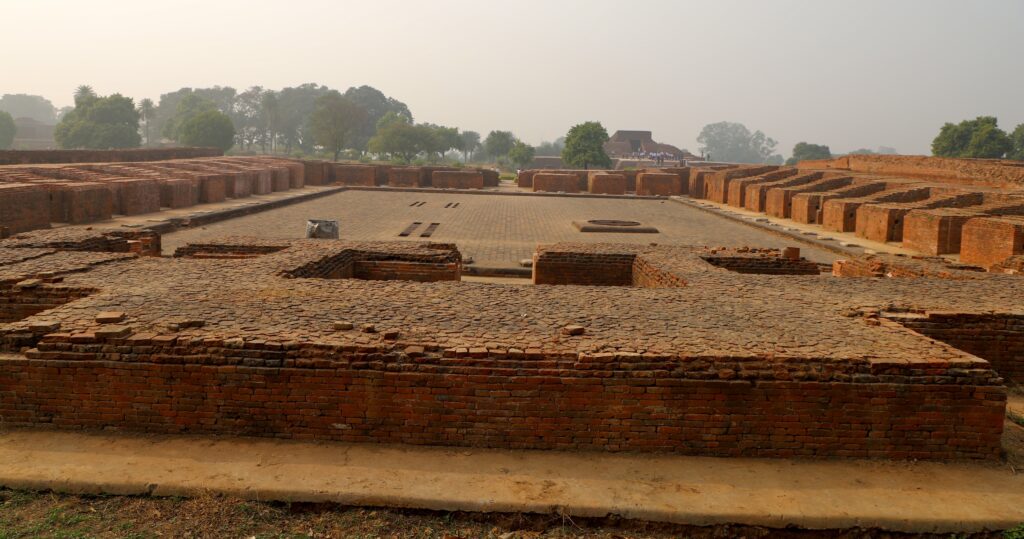
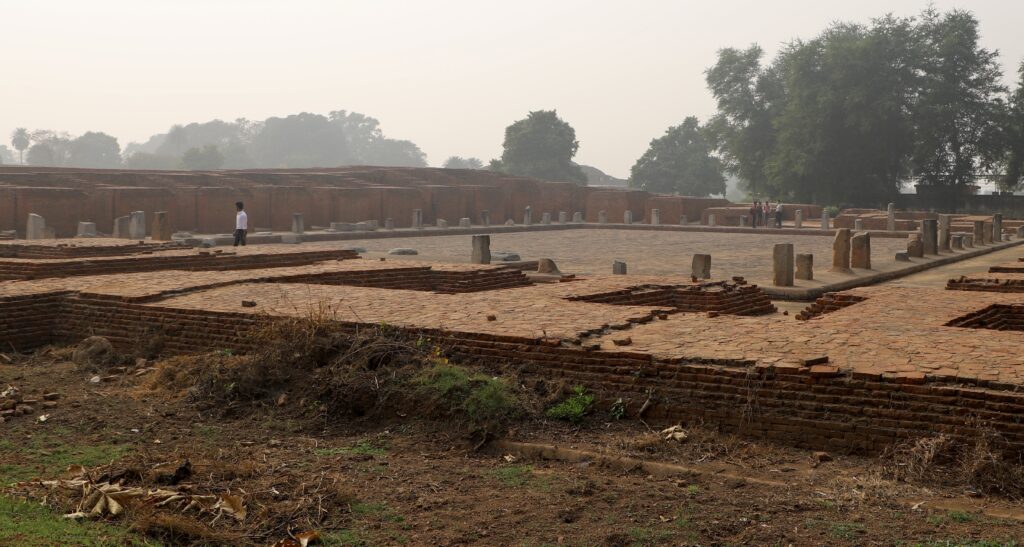
Nalanda Archaeological Museum – Housing the ancient relics of Nalanda University, this museum offers a glance into the culture of ancient Nalanda. Pala Art is displayed through the assorted artifacts maintained here. The statues here are mainly engraved on basalt stone, but others made out of stucco, bronze, stone and terracotta are also present.